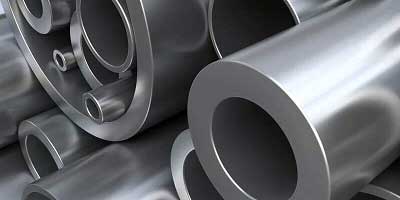Does Stainless Steel rust?
Stainless steel is a steel alloy that contains at least 10.5% chromium. The chromium reacts with oxygen in the air to form a protective layer that makes stainless steel highly resistant to corrosion and rust.
Because of its low-maintenance nature and resistance to oxidation and stains, stainless steel is preferred in many applications, especially those where aesthetics are important.
Even with these impressive properties, stainless steel can and does rust; after all, it is "stainless" and not "stainfree". Some types of stainless steel are more susceptible to corrosion than others, depending on the chromium content. The higher the chromium content, the less likely the metal will rust. But over time and if not properly maintained, rust can and will develop on stainless steel.

Factors influencing rust on stainless steel
Several factors can affect stainless steel's ability to resist corrosion. The composition of the steel is the biggest concern when it comes to corrosion resistance. The elements in different types of stainless steel can have adverse effects on corrosion resistance.
The environment in which the metal is used is another factor that can increase the likelihood of stainless steel rusting. Environments with chlorine are highly corrosive, and environments with salt water can accelerate corrosion on stainless steel.
Finally, maintenance has an effect on the metal's ability to resist rust. The chromium in stainless steel reacts with oxygen in the air to form a protective chromium oxide layer over its surface. Although this layer is very thin, it protects the metal from corrosion. This layer can be destroyed by harsh environments or mechanical damage such as scratches, but if cleaned properly and in a suitable environment, the protective layer will re-form and restore its protective properties.
Types of stainless steel corrosion
There are several types of stainless steel corrosion. Each of these poses a different challenge and requires a different approach.
- General corrosion - this is the most predictable and easiest to deal with. It is characterized by uniform loss of the entire surface
- Galvanic corrosion - this type of corrosion affects most metal alloys. It refers to a situation where one metal comes into contact with another metal, causing one or both to react with each other and corrode
- Pitting corrosion - this is a localized form of corrosion that leaves cavities or holes. It is common in environments containing chlorides
- Crevice corrosion - also localized corrosion that occurs in the gap between two connecting surfaces. It can occur between two metals or a metal and a nonmetal

Preventing stainless steel from rusting
Rusting stainless steel can be a problem and look unsightly. The metal is designed to resist corrosion, which is why most users are afraid when they see stains and rust on the metal. Fortunately, there are several methods at different stages that can help improve rust and corrosion resistance.
Preparation during the planning phase can pay off in the long run when using stainless steel. Ensure that the metal is used in areas with minimal water penetration to minimize surface damage. In cases where contact with water is unavoidable, drainage holes should be provided. The design should also allow free air circulation to prevent damage to the alloy.
Exceptional care must be taken during fabrication to avoid cross-contamination with other metals. Everything from the tools, storage units, turning rolls and chains must be carefully monitored to prevent impurities from entering the alloy. This can increase the chances of rusting.
Summary.. Once the alloy is installed, regular maintenance is the key to preventing rust and limiting the progression of rust that may have already formed. Remove formed rust by mechanical or chemical means and clean the alloy with warm water and soap. You should also coat the metal with an anti-rust coating.
Detailed Information

All stainless steel metals are a type of steel. That means their chemical composition contains iron...